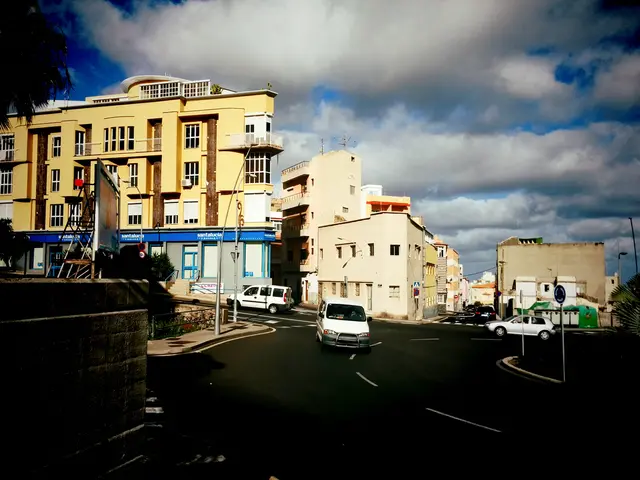No Heat Wave, No Red Alert Declared in France
France's Summer of Record-Breaking Heatwaves
France is currently grappling with a significant heatwave that has been affecting mostly the southern and southwestern regions, including Hérault, Var, Dordogne, Gironde (Bordeaux), and others. The heatwave, part of a broader European heat dome, has brought record-breaking temperatures and drought across the continent.
The peak of the heatwave has seen temperatures soaring above 40°C in multiple areas, with Angoulême and Bergerac reaching a scorching 42.3°C and 42.1°C respectively, marking some of the highest temperatures recorded this summer.
Météo-France has issued extensive heat alerts, with 42 departments under an orange heatwave warning and an additional 7 departments under yellow alerts, mainly in southern parts but extending towards central and western areas of the country. The ongoing heatwave has exacerbated drought conditions and wildfire risks, particularly in the south-east, where large areas have been scorched by fires linked to the heat and drought.
Water use restrictions have been enforced in many parts of the country, with fines for violations, reflecting the ongoing drought situation. However, there is no explicit information about any speed limits imposed due to the heatwave.
The heatwave has taken a toll on crops, with some in the Aude region and the Corbières massif still struggling due to the high temperatures. The northwest of the country, on the other hand, has been spared from the heatwave's intensity.
The heatwave has already affected crops in the Corbières massif and is still affecting three-quarters of the country, with the southwest and east-central regions being particularly affected. The heatwave has also raised concerns for electricity production and ozone pollution beyond crops and electricity production.
Ozone pollution has become a concern in the most exposed departments, and the number of departments on orange alert for heatwaves is increasing. As of Friday, 80 departments are expected to be on alert, including Finistère, Loire-Atlantique, Morbihan, and Maine-et-Loire.
The Golfech power station (Tarn-et-Garonne) has reduced its activity due to high temperatures and the warming of the Garonne. The temperature in Nevers (Nièvre) reached a record 39.8°C, and a temperature of 39.7°C was recorded in Saint-Michel-de-Maurienne, a village located at 698 meters above sea level.
In response to the heatwave, speed restrictions have been implemented in Ile-de-France to reduce the impact of vehicles. The maximum authorized speed on motorways is now 110 km/h, on 110 km/h roads it is 90 km/h, and on roads normally limited to 80 or 90 km/h it is 70 km/h.
As the second wave of summer, which began on August 8, continues to affect the country, France and its citizens are bracing for the challenges that lie ahead in the face of this unprecedented heatwave.
The record-breaking heatwave in France has brought focus to the impact of climate-change on the environment-science, as temperatures soar and wildfires increase. The weather patterns observed during this heatwave are causing concerns for ongoing drought, crop disease, and ozone pollution, further highlighting the connection between climate-change and the unpredictable nature of our weather.








